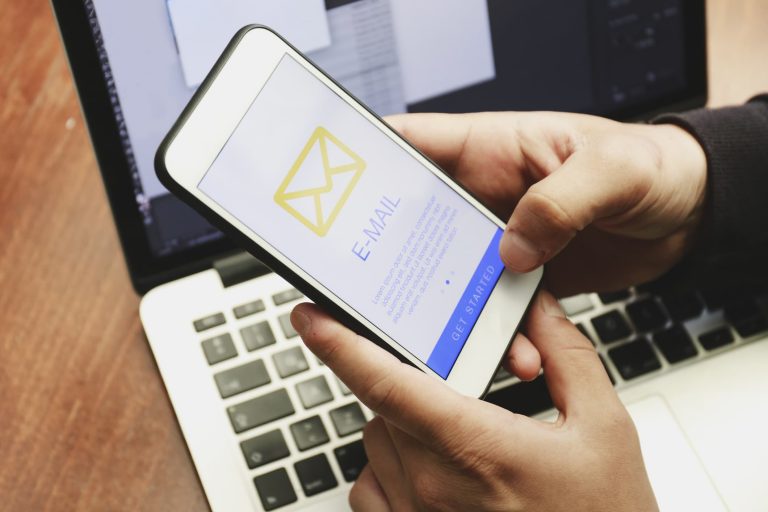Launching a new business—or even just a new product/service—can make even veteran entrepreneurs anxious. Besides thinking about whether your product is designed correctly or your service has covered all the right bases, you also wonder whether people will be interested.
This is why it’s essential to start marketing before your product is available for purchase, and that can include building pre-launch landing pages—specifically a coming soon page.
Why Create a Coming Soon Landing Page?
A coming soon page is a temporary landing page where you describe a business, product, or service that you haven’t launched yet. The purpose of the page goes beyond informing people—you want to generate interest and excitement, capture their contact information to alert them when your product is available, and encourage them to share the page with others.
Building a coming soon page can offer a head start on developing a customer base and even getting initial feedback to make your launch more successful. And since it’s a single (often simple) page, you can put one together in much less time than an entire website.
Now let’s get into building your own coming soon page. Follow the steps below, keeping in mind the exact aspects of your page that should be tailored to your business and industry.
How To Create a Coming Soon Page: 5 Steps
1. Choose a platform to build your coming soon landing page.
First up is selecting the right tool to build your page. For ease, you can use the same tool with which you plan to build your entire website. That way, you can work on your website in tandem with the coming soon page and simply switch or remove the coming soon page after launching.
2. Describe what people should expect from your launch.
What exactly are you launching—a whole business, new product line, revamped service? Let people know what you’re bringing to market, how it will impact their lives, and when they’ll be able to access it.
Yes, a timeline is important; a launch can quickly lose momentum if there are no realistic expectations of when a product will be available. Balance is also key here. Your timeline shouldn’t be too soon or too far off. You need enough time to build buzz around your launch and have people hear about it, but you also don’t want the timeline to be so far in the future that people will forget about it. If you’re unsure of an exact day or even month, you can use seasons—Coming Fall 2022, for example.
You can also add other elements to the page to amp up the anticipation factor. For example, a countdown timer can add a dynamic element to the page experience, as the days, hours, minutes, and even seconds tick down to launch time.
3. Include an email capture form (and relevant incentive).

One of the most valuable parts of a coming soon page is the opportunity to build an audience of prospective customers by capturing their emails for your email list. You can then engage these subscribers through launch day to help bolster your initial sales.
While some visitors may have enough interest in your product alone to subscribe, many will likely need an incentive. What you choose to incentivize them will depend on what you’re launching and the type of audience you’re targeting, but here are a few ideas:
- Subscriber-exclusive pricing
- Contest entry
- Product giveaway
- Valuable content
- Behind-the-scenes access
Don’t hesitate to include multiple email capture methods on the page. For example, you may include a form at the top of the page and an exit-intent pop-up for when visitors attempt to leave the page. Keep in mind that capturing and nurturing these pre-launch visitors could very well be a key contributor to launch day success.
4. Give visitors a way to provide feedback.
We mentioned how a coming soon page is a great way to get pre-launch feedback. When given the opportunity, people often share their honest thoughts, feelings, and questions. All of these could be key insights that add value to your product or service. For example, you may identify a use case you didn’t consider and add it to your marketing copy.
You have a few options for collecting feedback:
- Live chat. Through a relevant plugin or built-in feature on your page, you can have visitors chat with a bot or representative. Invite visitors to ask questions about your product or service so you can gather as much insight for your launch as possible.
- Social media. If you don’t already have social media pages set up for your launch, now’s the time. You can encourage people to ask questions or share their thoughts about your upcoming launch on various social platforms. Be sure to answer their questions and stay engaged with visitors afterward.
- Email. After joining your list, you can tell your subscribers to respond with questions. Try doing this in your welcome email.
5. Ask visitors to share your page.

Lastly, encourage visitors to share your coming soon page with their social networks. Be sure to include social sharing links to make it easy for them.
Do you recall the contest entry incentive from above? You can also use that option here to incentivize visitors to share your page. For example, every share could be worth an entry—the more they share, the more chances they’ll have to win.
Remember that your coming soon page is a vital tool in your pre-launch marketing toolbelt. And while the page is temporary, that doesn’t mean it should be static once created. Feel free to tweak it as necessary based on visitor feedback and the like. Good luck with your launch!





